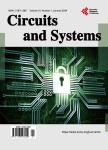Energy-Delay Efficient Unified Routing Protocol for Wireless Sensor Networks
Energy-Delay Efficient Unified Routing Protocol for Wireless Sensor Networks作者机构:Department of Computer Technology MIT Campus Anna University Chennai India Department of Computer Science & Engineering Jerusalem College of Engineering Anna University Chennai India
出 版 物:《Circuits and Systems》 (电路与系统(英文))
年 卷 期:2016年第7卷第6期
页 面:995-1007页
学科分类:0809[工学-电子科学与技术(可授工学、理学学位)] 08[工学]
主 题:Angle Based Routing Cross-Layer Energy-Delay Trade-Off Medium Access Control (MAC) Prims-Dual Minimum Spanning Tree
摘 要:One of the most important challenges in the Wireless Sensor Networks is to improve the performance of the network by extending the lifetime of the sensor nodes. So the focus is on obtaining a trade-off between minimizing the delay involved and reducing the energy consumption of the sensor nodes which directly translate to an extended lifetime of the sensor nodes. An effective Sleep-wake scheduling mechanism can prolong the lifetime of the sensors by eliminating idle power listening, which could result in substantial delays. To counter this, an anycast forwarding scheme that could forward the packet opportunistically to the first awaken node may result in retransmissions as if the chosen node falls in resource constraints. The algorithm, namely Prim’s-Dual is proposed to solve the said problem. The algorithm considers five crucial parameters, namely the residual energy of the nodes, transmission power, receiving power, packet loss rate, interference from which the next hop is determined to extend the lifetime of the sensor node. Since the proposed work is framed keeping critical event monitoring in mind, the sleep-wake scheduling is modified as low-power, high-power scheduling where all nodes are in low-power and the nodes needed for data transmission are respectively turned on to high-power mode. The integrated framework provides several opportunities for performance enhancement for conflict-free transmissions. The aim of our algorithm is to show reliable, energy efficient transfer without compromising on lifetime and delay. The further effectiveness of the protocol is verified. The results demonstrate that the proposed protocol can efficiently handle network scalability with acceptable latency and overhead.



